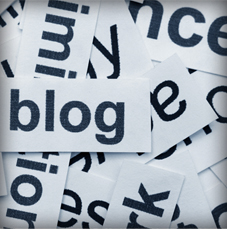



WORDS TO
THE WISE
Tips for Engaging Bloggers to Promote your Events
06.23.14
| By Jenni Izzo |
| Technorati’s latest Digital Influence Report showed that “consumers are turning to blogs when looking to make a purchase.” In fact, 31 percent of consumers say the personal blogs they read influence their purchasing decisions – ranking higher than social media outlets. In the blog world, influenced purchases are typically electronics, personal care and clothing – but this statistic also applies to event attendance and ticket sales. For many blog readers, reading a positive review of an event is like hearing it first-hand from a trusted friend. Here are four tips to keep in mind when engaging with bloggers to drive event awareness and attendance.1. Think local. When deciding what bloggers to engage, consider location first. To drive event and festival attendance, you’ll need to think locally. You can use the same geographic parameters as you would with traditional media. Blogs, by nature, often have national readership – so look for bloggers who have a local focus. Some of my favorites include Central Florida Top 5 (Orlando) and My Other City By the Bay (Tampa).
2. Research. There are more than 152 million blogs on the Internet. That’s a lot of options! One of the most important steps for meaningful blogger engagement is to identify those who fit your event and brand. If you’re hosting a family festival, focus on family and parenting bloggers. If it’s a fitness-based event, you’ll want to target health bloggers. However, be aware that there’s a lot of cross-over, and the best way to gauge whether a blogger would be interested is to … 3. Read multiple posts. Just as you can’t judge a book by its cover, you can’t judge a blog by its header. Read the “About Me” page, as well as the most recent posts. Is there anything that resonates with your event or festival? Look for comments about planning a summer trip, being excited for the fall, looking for something new to do. Would your event fit in amid the current topics? 4. Clearly define the offer and expectations. Once you’ve selected the blogger(s) you’d like to work with, clearly define what you’re offering and what you expect in return. Is there an exclusive preview the blogger can attend? If you’re providing complimentary tickets, state how many. If your end goal is a great post about their experience, provide a clear timeline. For example, if the goal is to drive ticket sales, you’ll want to be sure the post happens in the proper timeframe. Working with bloggers can be an excellent way to increase event awareness and help generate buzz for ticket sales and attendance. When handled correctly, blogger engagement can be the first step in developing a strong relationship with a valuable brand advocate and influencer. Jenni Izzo is a Senior Account Supervisor at Linda Costa Communications Group, a PR agency based in Central Florida with a national presence. Her specialty is connecting influential bloggers with organizations and brands nationwide. This blog originally appeared in the Florida Festivals & Events Association newsletter. |
Pitching on Social Media: Like or Dislike
03.18.14
By Wendy Gustama
For the last month, you’ve been trying to get on a reporter’s radar with no luck. You decide to turn to social media, but wonder if you’re crossing a line where access is denied for PR professionals. We’ve all been there. With the changing landscape of media, things are bound to get a bit fuzzy. To get a clearer picture about pitching on social media, we contacted a handful of journalists and bloggers in the Orlando area to get their perspective. Here’s what they had to say:
I’m in favor of being pitched via social media, but I think it should be in addition, rather than instead of more traditional channels. We tend to get so inundated with email that it can only help to use other available avenues to get your story heard. Adding social media to the package seems like a wise move to me.
David Breen, Orlando Sentinel
I would tend to vote nay on pitching journalists via social media. Personally, I would rather receive pitches in a more private manner such as email or through the postal service. Even a private message on LinkedIn would be okay, but I probably would delete pitches on Twitter or Facebook. I try to keep my personal and work lives somewhat separate. If a PR professional was to contact me for networking purposes on LinkedIn, or even on Twitter, that would be acceptable. However, I reserve Facebook for individuals I know in person and contact regularly for social purposes.
Brittany Davies, Orlando Restaurant Examiner
In the case that you don’t have my email, I’m OK if you send me a quick Facebook message via my professional page. I’m always checking all of my social media channels, so if it’s a good story, I want to find it. Just make sure you don’t pitch me on all mediums (e.g., Facebook, Twitter, Instagram, etc.) In my opinion, that would be too pushy. Another way to use social media would be sharing Facebook links or Twitter handles in your pitch so I can do some quick and easy research.
Paula Machado, Infomás (News 13 Hispanic affiliate)
It’s fun to gauge social media to see if our readers and followers might be interested in a topic. On the other hand, it’s nice to feel exclusive and get an inside story or scoop via email. We try to work with PR companies as they have been very supportive of us!
Brian Wilson, Central Florida Top 5
@TheNiceBrian and @CentralFLTop5
Instead of the “Do Not Enter” sign we imagine in our minds, the barrier likely says “Approach with Caution.” As with all media outreach, pitches should target reporters based on their beat and preferred method of contact. Test the waters with your contacts and you’ll figure out what works best.
Wendy Gustama is an Account Executive at Costa Communications Group.
Confessions of a Pinterest Addict
02.21.12
I’ll admit it: I’m addicted to Pinterest … but I’m not alone. In December, AdAge reported that Real Simple went on the record to say that Pinterest drove more traffic to their site than social media giant Facebook. And considering the difference in size and age (Pinterest is just shy of two years old with 11 million visits a week, compared to Facebook at eight years old and 800 million people strong) – this is a huge accomplishment.
Most recently, in the spirit of “if you can’t beat them, join them,” Facebook recently announced that Pinterest will now be available through their website via an application. If past partnerships are any indication, you can bet that Pinterest’s reach will continue to grow at an even higher rate. Which means that we, as PR and marketing professionals, will need to embrace the network just as we have Facebook and Twitter, in an effort to present clients with strategic opportunities.
However, like all other social networks, there won’t be a “one-size-fits-all” approach to using Pinterest effectively. First, get acquainted with the site and its features (most specifically, its categories, which include everything from “hair & beauty” to “cars and motorcycles”) … then take note of how items are shared and which are the most popular. Are they in-line with what your client offers? Or, more importantly, is there a void that they could fill?
How do you use Pinterest, personally and professionally?
#TheDownSideofPromotedHashtags
01.31.12
McDonald’s fell into some hot grease water recently when the company’s foray into promoted hashtags was met with much negativity. Their #MeetTheFarmers push caught my eye and I thought it was a genius idea. With the focus on local everything nowadays, it seemed the perfect medium to share the short YouTube videos introducing consumers to the farmers behind the lettuce, tomatoes and beef on the ever-popular Big Mac. The idea was focused and used the buzz of a timely topic. However, a few days later, McDonald’s went back for seconds with the promoted hashtag #McDStories – which sounds more like an organic trend (e.g., #WhenIWas15, #MiddleSchoolMemories) than one that, more than likely, came with a high menu price. Without getting into too much detail, the “stories” shared were not ones any restaurant would want associated with them.
Walgreens also experienced a similar – while not as public – situation recently when they paid to promote #ILoveWalgreens to the top of the Twitter trends list. There’s already a lot of commentary about what happened with McDonald’s and Walgreens, so I won’t add to it … but instead raise a question: What does this mean for one of Twitter’s most profitable offerings, the promoted trend?
As I type this, #GetSerious* is currently being promoted. Assuming it was maybe a tagline to an upcoming movie, I clicked on it to find that it’s actually being promoted by the U.S. Chamber in an effort to encourage the White House to “#GetSerious about jobs.” The hashtag – which has probably been used in the past organically – is vague and from what I can tell, being used to talk about everything but jobs. Whether this was an intentional “hijacking” or not, many Twitter users seem to have misunderstood the meaning behind it.
As with all things, promoted trend failures will undoubtedly get more media exposure than the successes – but with that said, will the recent examples deter other brands from taking on the risk associated with such a purchase? And if that’s the case, how can Twitter rectify the situation by making it a more controlled environment?
As a PR professional, will you think twice about recommending promoted trends to your client?
*The promoted trend “#GetSerious” has since been replaced by #TellTheWhiteHouse – a much less vague call to action, in my opinion.
Coca-Cola’s Thirst for Social Media Success
12.20.11
If I had to guess which Facebook pages are the most popular, I would chose Justin Bieber, Disney and MTV (not in that order). While they are on Facebook’s Top 100 Most Popular Facebook Pages In The World list, the chart toppers surprised me.
Currently, Coca-Cola® is the most popular brand page on Facebook. Companies such as MTV and Starbucks aren’t even listed in the top 20. A recent USA Today article examined the ways in which Coke® has begun to dominate the social media realm. Through the creation of smart phone applications and the use of contests and giveaways, the brand reached an unparalleled level of online intricacy.
While only a part of the company’s overall $2.9 billion advertising strategy, their efforts have clearly paid off. Wendy Clark, the company’s senior vice president of integrated marketing says that Coca-Cola places great emphasis on social media because consumers who follow their brand online are 10 times more likely to purchase their product. And it’s working: Coke’s beverage sales are up 6 percent worldwide year-to-date.
Coke has also earned respect on other social networks including YouTube, where its videos have been viewed 33.5 million times and Twitter, where it has 400,000 followers. While speculation is to be expected, Coke’s online success is nothing short of a well-calculated marketing takeover.
Earlier this month, Coca-Cola was named “Marketer of the Year” by Advertising Age, citing it as an example of how small and mid-sized brands also “can use creative stunts and strategic partnerships to get a lot done on a smaller budget.” This recognition further solidifies their claim as one of the best in online conversation. Coke’s secret? “Letting fans be fans,” says Michael Jedrzejewski, one of the pages’ original creators. “People are savvy enough to know when a Facebook page is contrived and manufactured.”
What are some of your favorite brand pages on Facebook? What sets them apart from the rest?
Kristin Serio is a social media coordinator at Linda Costa Communications Group . She enjoys piña coladas, long walks on the beach and a daily Diet Coke (or two).
Social Networks Help Tip the Scales to Healthy
09.28.11
National trends reveal America’s growing concern for health and nutrition. As a result, companies have adapted internal values, product offerings and marketing strategies to fit customers’ desire for smaller portions, fewer calories and healthier substitutes. But let’s face it, individual and societal habits are hard to change, and simply offering healthier options doesn’t necessarily translate into lower percentages of obesity.
Miriam Nelson, author of The Social Network Diet: Change Yourself, Change Your World, suggests the effectiveness of community-focused “Change Clubs” as a primary means of encouraging healthy lifestyles among Americans. She advocates the power of social networking — in conjunction with government, schools and businesses — in reducing obesity. Interestingly, research studies observe correlations between people gaining or losing weight and others in their social circle following suit. If one person loses weight, his/her spouse, siblings, or friends are also likely to shed pounds due to shared environments and exercise.
Nelson has successfully established eight community “Change Clubs” focused on adapting the environment and creating a volunteer network to inspire healthy lifestyles. Read more about Miriam’s story in this recent USA Today article and discover how to positively affect your social network. Who knows … you just may gain more friends and lose a few pounds at the same time.
To Engage or Not to Engage
09.30.10
… For some, that is the question. When it comes to social media for your business, Shawn Vincent hit the nail on the head with this tweet:
Chances are your brand (or industry) is being talked about online. Whether it’s a compliment or complaint, it’s an opportunity to thank a loyal advocate or address a concern. To equate this to the pre-Twitter, Facebook and blogging days, think of these comments as if they were a phone call to your headquarters. But, with social media, that “call” is potentially being heard by millions of users.
Opportunity is calling. Are you picking up?
Why You Should Check Out Check-Ins
06.16.10
Foursquare, the location-based social media platform taking the Internet by storm, is averaging 10+ check-ins per second. Co-founder Dennis Crowley expects the website to hit 1 million check-ins daily by mid-June.
Brands that use the network to their advantage stand to gain increased exposure and consumer loyalty. In addition to collecting badges and “mayor” titles at locations around town, users are also encouraged to share tips and recommendations with others. Insider advice like “try the passion fruit juice” and “50 cent oysters during happy hour” equate to free advertising for companies.
Take a cue from Starbucks and reward these brand ambassadors with incentives. Since the debut of their nationwide mayor promotion ($1 off Frappuccinos), the coffee house has experienced a 40 percent increase of check-ins week-to-week. The following are a few examples of best practices:
If you are interested in integrating Foursquare into your business, do it in a way that reflects your company’s personality – and be sure your customers know. Whether it’s coupons, freebies or a pass to jump the line, your generosity just might earn you a shout-out on Twitter.
Photo source: @maxwellzorick
Two Major Brands Get Social
05.20.10
Two major companies announced an emphasis on new social media initiatives within hours of each other this past Monday. NBC announced its Fan It program, and Starbucks became the first company to offer nationwide discounts for “mayors” on Foursquare.
Harnessing the power of Facebook, Twitter, MySpace and Foursquare, Fan It hones in on what people are already doing and rewards them for it. The idea is simple: “Like our shows. Earn points. Get rewards.” Once users sync their accounts with Fan It, they earn points by watching videos, sharing links, playing games and updating their statuses. Similar to Foursquare’s premise, viewers can redeem points for badges, exclusive videos and merchandise. The reason this idea works is because NBC is rewarding users for things they are already doing online, and as a result, reinforcing – and encouraging – network-specific content.
Starbucks, on the other hand, is using a more centralized approach. Focusing only on Foursquare, the coffeehouse chain unveiled the first-ever nationwide mayor special: “$1 off a new however-you-want-it Frappuccino blended beverage. Any size, any flavor.” Just like NBC, Starbucks is rewarding customers for something they are already doing (in this case, visiting the store), as they support their brand and create a stronger following.
If you are still wondering whether social media is a fad, consider this: The country’s oldest major broadcast network and the largest coffeehouse company in the world are using these tools to their advantage … can you do the same?
Image source: Mashable.com
In case you missed them: smaRTweets
03.12.10
Over the past few weeks, the Linda Costa Communications Group team has compiled a list of our favorite tweets – ranging from informative to amusing. Here they are, in case you missed them.
A special thanks to @hdueitt, @CHSHeather, @copyblogger, @AngelaHernandez and @indefensible for your insight, content sharing and good humor.
